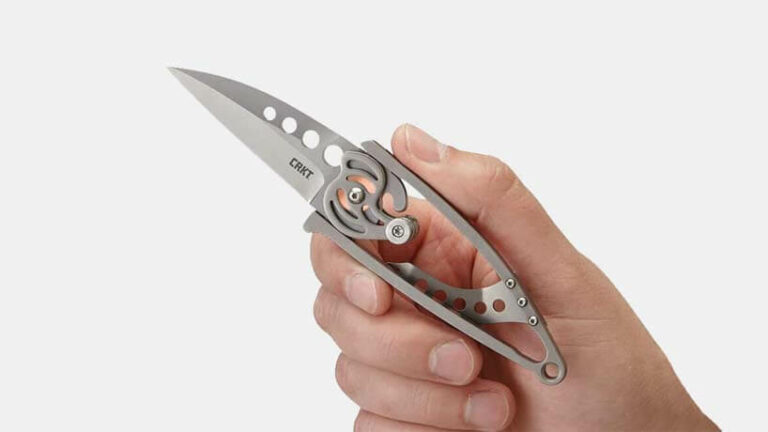If you’ve ever shopped for premium kitchen knives, you’re almost guaranteed to have come across a J.A. Henckels or Wusthof knife. These expertly engineered brands offer you a smooth and professional knife experience. They’re widely known and regarded as some of the best premium knife makers on the kitchen knife market.
Fortunately, for us (the consumer), there’s been an ongoing Wusthof vs Henckels head-to-head raging for almost 300-years. This has led to the latest and most efficient forging and stamping techniques, bringing you some of the highest performing knives for the mass market.
They offer wide ranges of knives that suit an even wider range of budgets. It’s all this choice that makes it hard to choose between the two brands. At face value, they look extremely similar – but when you take a close look, as we will, you’ll start to notice the subtle differences.
Hopefully, by the end of our guide, you’ll be well-equipped and informed enough to decide which knife best offers you the experience you’re after. You’ll know where each brand excels, and how you can make the most of these subtle differences and get a knife that’s a perfect fit for you! Let’s take a look!
Wusthof vs Henckels: A Quick History
Both Henckels and Wusthof are German knives – and they live up to the age-old expectation that German engineering is exceptional. Their hometown is Solingen, Germany – often referred to as “The city of knives”. Henckels is the older of the two companies, dating back to the late 1700s, with Wusthof starting around half a century later.
This means that both brands have had plenty of time to perfect and modernize their knives. Techniques and forging methods have been revamped and updated to stay in line with the latest practices and modern technology. Both companies have been family owned since their inception. This is quite a feat and testifies to the attention to quality and the customer experience.
Knowledge and secret techniques have been passed from generation to generation – leaving us, the consumer, with extremely efficient knives. While history isn’t the most important aspect to compare, it’s useful to know and gives you an informed big picture view of the companies. Let’s take a look at how these knives are similar in aspects other than their histories.
Wusthof vs Henckels: The Similarities

These knives share more similarities than they do differences. Perhaps the most similar is their price. When you’re buying knives of similar quality and product line, you’ll hardly notice a difference. For example, an 8” chef’s knife from Henckels will only be a couple of dollars more expensive – if at all – that an 8” chef knife from Wusthof.
The prices will vary depending on which product and quality-grade you go for, but at the end of the day, similar knives will cost almost the same from both companies. Both companies use exceptionally high-quality steel, usually high-carbon or stainless steel in their knives.
You can find both forged and stamped knives with both brands too, which is great if you’re on a budget. The blade design and length is interpreted pretty much the same across their product ranges. A chef knife from Henckels isn’t going to look very different from a Wusthof chef knife.
All their Japanese style knives are sharpened to a 10-degree angle so there won’t be a noticeable difference in how they cut – but this isn’t the case with their standard knives. There isn’t much to separate these knives in terms of size and weight. Similar knives from both companies weigh almost the same, with similar-sized handles.
There are differences in how the knives are balanced, but there isn’t a trend – it depends on the model and product line. Finally, both companies offer premium forged knives and cheaper stamped ones. The quality is excellent across the board, and budget models cost roughly the same.
Wusthof vs Henckels: The Differences
Wusthof knives are sharpened to a 14-degree angle, whereas Henckels knives are sharpened to 15-degrees. In practice, this doesn’t lead to a huge difference in cutting power and efficiency. Wusthof knives are slightly sharper than Henckels knives, and only an experienced enthusiast will be able to tell the difference.
Wusthof knives use slightly harder steel, which complements their sharper cutting edges. This means that you’re getting slightly better edge retention. The tradeoff is that the steel is more prone to edge chipping and is slightly less durable. Most Wusthof knives have an HRC rating of 58, whereas most Henckels knives have an HRC rating of 56-57.
The slightly softer steel of Henckels gives them a little more durability, and they’re a little less brittle than Wusthof knives. Edge retention isn’t as good as Wusthof, but this isn’t a very noticeable difference in practice. You’ll find Henckels knives to be easier to sharpen, but again, the difference isn’t huge. Only experienced users will be able to immediately tell the difference.
The final difference is the handle shape and design. Both knives have excellent handles and ergonomic designs, but the handle curves in different places. Henckels knives have an ergonomic curve at the butt of the handle. It’s quite a significant change in shape and stops your hand from slipping off the bottom of the handle.
Wusthof knives have their main curve further up the handle – closer to where it meets the blade. This helps you get accurate pinch grips and brings the knife’s balance point closer to where a natural pinch grip would sit. The handle type you prefer depends on your personal preference, what you’re used to, and the type of chef you want to be.
Are Henckels and Wusthof Knives Worth the Money?
Value for money is quite subjective, but speaking from experience – these knives wear excellently and are well worth the initial investment. Yes, you can get some great cheap knives, but you need to hunt. Expect to be let down often if you’re set on buying budget knives.
Quality control isn’t always the greatest. If you can afford the upfront price, both Henckels and Wusthof knives offer premium build quality, durability, performance, and fair limited lifetime warranties. I’ve used knives from both brands and I’ve never had to send one back.
The premium material and craftsmanship developed over hundreds of years means you’re getting some of the best kitchen knives on the market today. Make sure you do your due diligence before buying one of these knives, as not all of them are made in Germany. Some of the budget ranges are made in other countries like Spain and often aren’t held to the same rigorous quality control.
If you want to broaden your kitchens horizons and try other brands, Shun and Victorinox offer excellent and competitive models. If you’re looking for unique and impressive knives, without sacrificing much performance, then Global is another fantastic brand. Overall, Wusthof and Zwilling J.A. Henckels are safe choices if you want premium performance at a fair price.
Caring and Maintain Henckels and Wusthof Knives
You’re spending premium money for a premium kitchen knife, you need a premium care and maintenance routine. It’s always a shame to see a premium knife being corroded and chipping into oblivion because the owner doesn’t store it properly. The first and most important care pointer is to keep your premium knives out of the dishwasher.
You should always be hand-washing premium kitchen knives. Washing it with other cutlery and dishes is a surefire way to scratch, chip, and corrode your knife. Make sure you thoroughly dry the knife before storing it. If you have a case for your knife, then you’re already a step ahead, but if not, you can always keep it in a wooden knife block.
Keep your cutting edge sharp and at its best. You should learn how to strop a knife so that you don’t need to constantly sharpen it. In case you didn’t already know, you take a little bit of steel off your knife’s edge every time you sharpen it. Stropping will realign the edge without taking any steel off.
This helps your knife last longer and cut better between sharpening. The final care and maintenance pointer is to only use your knife for its intended purposes. You shouldn’t be using the blade to pry open packages, or cutting hard things that you shouldn’t be.
Keep all these pointers in mind and you’ll have a great care routine that will hugely extend the lifespan of your knives. Bear in mind that with a little experience and discipline, you’ll get a good routine into a habit and you’ll be doing it on autopilot.
Final Thoughts
You should have a pretty clear idea of the similarities and differences between these two standout brands. Regardless of which one you choose, you’re getting excellent value for money and knives. That will be by your side for years if you treat them right.
Take what you’ve learned from this Henckels vs Wusthof head-to-head comparison. Get your hands on a couple of knives, and see what works best for you! With what you’ve learned here, and a little patience and experience. You’ll get a premium knife that takes your kitchen game to the next level – and helps you become the chef you want to be!







